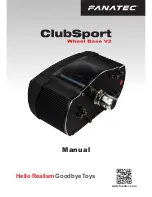
AvL Proprietary and Confidential
Content is Subject to Change without Notice
Page
150
of
195
7.3 AAQ Controller System Detailed Description
AvL produces a wide variety of transportable antenna products with a vast array of capabilities tailored
for different customers and market segments. Aperture sizes range from a fraction of a meter up to
many meters. Operating frequencies range from L-band (1.5 GHz) up to Ka-band (30 GHz). The AAQ
antenna controller must be able to interface with a wide variety of equipment for position sensing and
signal monitoring purposes. It must also be able to perform a large number of specialized functions in
addition to performing the standard Acquire and Stow commands. Historically, the ACU in our antennas
required many different current versions of antenna control software running on a single hardware
platform with all the work being done by a single processor. As a result, the flexibility and scalability of
the critical ACU function in our antennas was limited.
The AAQ ACU employs a superior approach. Unlike our legacy systems, the AAQ software is not
monolithic, instead is modular and parametric by design.
7.3.1 Modular / Parametric Software
AAQ software is segregated into a single ROM (Read Only Memory) code, several PIC
(Programmable Integrated Circuit) codes and many device modules. The ROM code is common to
every antenna system and is responsible for the basic control and communication functions
necessary for any of our auto-point antenna systems. It runs on a state-of-the-art ARM ( Advanced
RISC Machine )processor where RISC stands for (Reduced Instruction Set Computer), with ample
memory available for program execution and storage. The PIC code runs on distributed processors
that are tasked with critical, lower-level processes such as positioner axis motion control and sensor
suite control & digital Input /Output. Many of the software modules add enhanced capabilities to
the AAQ ACU such as Step Track and Inclined Orbit Satellite Acquisition. Other modules act as
software “drivers” that open interfaces to AvL optional and customer provided equipment such as
modems, beacon receivers, and spectrum analyzers. This modular software architecture provides
the ultimate in flexibility and responsiveness while minimizing the risk associated with the inevitable
software changes typical of a continuously evolving / improving product by isolating new software
and code changes at the module level.
An extensive set of user defined configuration parameters are used to enable one version of AAQ
software to function as expected across a wide range of antenna hardware platforms. Through
these parameter settings, the controller is made aware of the sensors that are present on a system
and the role that each of them plays in providing critical information and feedback to the antenna
control process. Control loops are properly managed and the appropriate software module
connections made.
















































